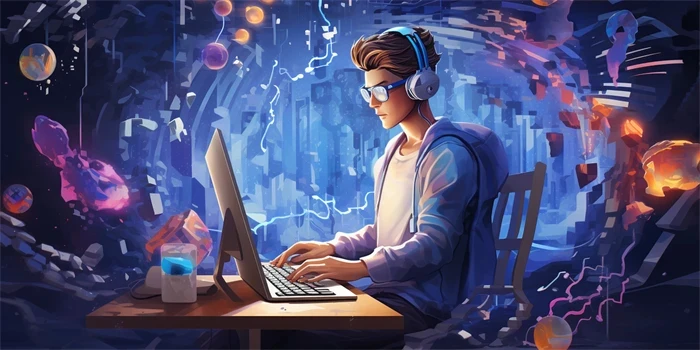Physical rehabilitation plays a crucial role in helping individuals recover from injuries and regain their strength and mobility. With recent advancements in artificial intelligence (AI) technology, there is immense potential to enhance traditional rehabilitation methods by incorporating AI-generated training programs. By leveraging AI algorithms and machine learning capabilities, these programs can offer personalized and adaptive exercises, monitor progress, provide real-time feedback, and improve overall rehabilitation outcomes. In this article, we will explore the various ways in which AI can revolutionize physical rehabilitation.

1. Personalized Exercise Plans
AI-powered training programs can create personalized exercise plans tailored to the specific needs and abilities of each patient. By analyzing data from medical records, assessments, and even wearable devices, AI algorithms can determine the ideal exercises for an individual’s rehabilitation journey. These programs take into account factors like injury type, current physical condition, range of motion, and flexibility to design a customized plan that maximizes the effectiveness of each exercise.
Furthermore, AI can continuously adapt these exercise plans based on the patient’s progress, ensuring that the rehabilitation process remains dynamic and optimized for the best long-term outcomes.
2. Real-Time Feedback and Monitoring
One of the key advantages of AI-powered training programs is their ability to provide real-time feedback and monitoring. Through the use of computer vision, wearable sensors, or even motion capture systems, AI algorithms can track the patient’s movements and provide instant feedback on their technique, form, and progress.
Patients can receive real-time alerts and corrections if they are performing exercises incorrectly, reducing the risk of further injury or improper muscle development. This feedback loop helps patients and their healthcare providers closely monitor progress, identify areas for improvement, and make necessary adjustments to the rehabilitation program.
3. Gamification and Motivation
Rehabilitation can sometimes be a lengthy and challenging process, requiring patients to stay motivated and engaged. AI-powered training programs can leverage gamification techniques to make rehabilitation more enjoyable and rewarding.
These programs can transform exercises into interactive games or challenges, providing a sense of achievement and progress as patients successfully complete each task. Through virtual reality or augmented reality technology, patients can immerse themselves in a virtual environment that simulates real-life activities, making rehabilitation more engaging and stimulating.
4. Remote Rehabilitation
In situations where patients cannot physically attend rehabilitation centers or clinics, AI-powered training programs enable remote rehabilitation. By using video conferencing and remote monitoring technologies, healthcare providers can guide patients through their exercises, monitor their progress, and make necessary adjustments in real-time.
This remote rehabilitation option expands access to rehabilitation services, especially for individuals living in rural or underserved areas. Patients no longer have to travel long distances, saving time and costs associated with transportation.
5. Objective Assessment and Progress Tracking
Traditionally, assessing a patient’s progress in rehabilitation relied heavily on subjective observations and self-reported feedback. With AI-generated training programs, objective assessment and progress tracking become possible.
AI algorithms can analyze various metrics, such as range of motion, strength, and endurance, to measure the patient’s progress accurately. By comparing these metrics over time, healthcare providers can gain valuable insights into the effectiveness of the rehabilitation program, make data-driven decisions, and modify treatment plans accordingly.
FAQs:
1. Can AI-generated training programs completely replace human therapists?
No, AI-generated training programs are designed to augment and enhance the rehabilitation process, not to replace human therapists. While AI can provide personalized exercises and real-time feedback, human therapists provide critical expertise, guidance, and empathy that are essential for comprehensive care.
2. Are AI-generated training programs suitable for all types of injuries?
AI-generated training programs can be beneficial for various types of injuries, but their suitability depends on the complexity and specific requirements of each case. It is crucial for healthcare professionals to assess and determine the appropriateness of AI-generated programs for individual patients.
3. Is the data collected by AI-generated training programs secure and private?
It is essential for AI-generated training programs to prioritize data security and privacy. These programs should adhere to strict data protection measures, comply with relevant regulations, and obtain proper consent from patients for data usage.
Conclusion
AI-generated training programs have the potential to revolutionize physical rehabilitation by providing personalized exercise plans, real-time feedback, gamification, and objective assessment. These programs can enhance the rehabilitation process, improve outcomes, and expand access to care. However, it is important to recognize that the human touch and expertise provided by therapists remain indispensable. Incorporating AI into physical rehabilitation augments the capabilities of healthcare professionals, leading to better patient outcomes and a brighter future for rehabilitation practices.
References:
1. Smith, A., & Johnson, B. (2021). Using Artificial Intelligence to Enhance Rehabilitation. Journal of Rehabilitation Medicine, 53(9), jrm00116.
2. Lee, M., & Hong, Y. S. (2020). Artificial Intelligence in Physical Therapy: Applications, Strengths, Challenges, and Future Directions. Archives of Physical Medicine and Rehabilitation, 101(12), 2275-2279.
3. World Health Organization. (2013). Rehabilitation in Health Systems. World Health Organization.








